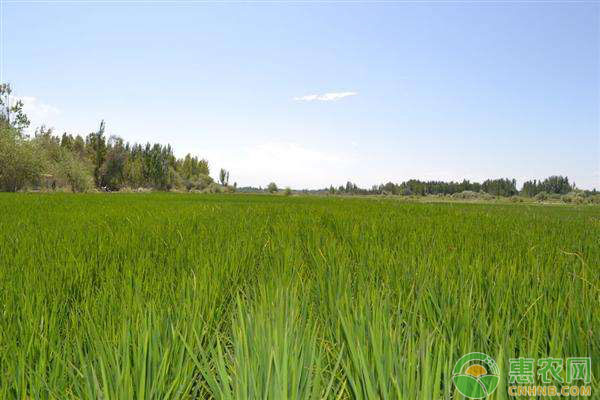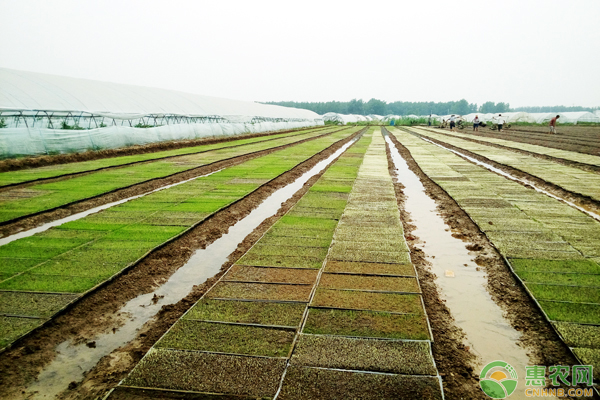Fertilization plays a very important role in the conservation and management of rice. However, formula fertilization is a major achievement in the comprehensive application of modern agricultural science and technology. It is based on the requirements of the amount of fertilizer needed for crop growth, the characteristics of soil fertilization and the fertilizer. Function, and use organic fertilizer as a base fertilizer, with the scientific dosage and ratio of nitrogen, phosphorus, potassium or micro-fertilizer, and then use appropriate fertilization techniques. Fertilization is a key part of the management of rice conservation. The yield and quality of rice are greatly improved. It is not only the objective role of genetic factors and environmental factors, but also the nutrient level absorbed during its growth. The role of cockroaches. Among them, nitrogen, phosphorus and potassium are often mentioned as essential nutrients for rice growth. At present, due to the widespread promotion and use of new rice varieties in China, rice production has achieved remarkable achievements, but its quality cannot be guaranteed. In the face of low fertilizer use and poor quality, it is especially important to strengthen the scientific management of formula fertilization during the process of rice growth and fertilization. 1 Basic outline of rice formula fertilization The so-called rice formula fertilization mainly refers to the objective and scientific evaluation of the nutrients contained in the soil of the rice planting area, and analyzes which nutrients are mainly lacking in the rice growing soil, and then according to the nutrients necessary for the growth of rice, Formulate a scientific formula for fertilization. Scientific formula fertilization can not only effectively increase the intake of rice nutrients, but also increase the yield per unit area of ​​rice cultivation, and achieve a win-win situation with high yield and high quality of rice. However, it is worth noting that the formula fertilization during rice planting and cultivation must be scientifically and rationally proportioned according to the specific needs of nutrients such as N, P and K in rice production. Through a series of practices, it is proved that accurately grasping the fertilization standards of different varieties of rice, grasping the fertilization amount of rice planting and reasonable fertilization methods can effectively increase the yield per unit area of ​​rice. It can be seen that it is necessary for the relevant staff to carry out formula fertilization work while being familiar with the actual nutrient composition of the soil in the rice planting area, the basic fertilizer supply capacity of the soil and the fertilizer utilization rate. 2 Effect of formula fertilization on rice yield 2.1 NPK formula fertilization affects rice yield It usually starts when the rice has matured and begins to measure the rice yield. When the rice is mature and can be harvested, the rice is dried in the ventilated place under the sun, and then weighed according to the rigorous process. Finally The calculation method used to calculate how much water is contained in the rice. In this part of weighing, not only the newly harvested rice and the dried rice are weighed one by one, but also the rice and rice straw are weighed to further ensure that the weighing result of rice yield is scientific and accurate. Scientific and rational formula fertilization can increase the yield per unit area of ​​rice cultivation, and further enhance the economic benefits of rice cultivation. In summary, it can be proved that the final yield of rice fertilized by formula is directly proportional to the amount of nitrogen nutrient added in rice planting management. Increasing nitrogen nutrient elements can increase the effective panicle number of rice and the effective panicle per unit area of ​​rice planting. The actual number of rice grains in the rice plant increases the yield of rice. Under normal circumstances, if the nitrogen and phosphorus nutrients are scientifically fertilized, the rice yield per unit area is generally higher than that of the normal fertilized planting area. The actual situation is that although the amount of nitrogen nutrients in rice fertilized under daily conditions during rice cultivation is large, the proportion of nitrogen, phosphorus and potassium nutrients actually present in rice nutrients It is not scientific, nitrogen nutrient elements are basically used as base fertilizer, but in fact, there is a difference in the amount of nitrogen nutrient absorption in each stage of rice during its growth cycle. 2.2 Formulated fertilization affects rice yield in different growth stages of rice During the whole growth period of rice, it takes a lot of nitrogen fertilizer to enter the heading stage, which accounts for more than 50% of the whole growth period of rice. During the period, the nutrient content of potassium absorption is relatively balanced, and it is necessary to follow the different nutrient requirements during the whole development period of rice. Complete scientific and targeted fertilization. Therefore, the improvement of rice yield not only depends on the promotion of new varieties, but also needs to maximize the value of rice varieties. This requires efficient and advanced rice planting technology. Formulated fertilization technology can play a very good auxiliary role, which can balance each nutrient during rice growth, maximize the specific nutrient requirements for rice growth, and increase rice yield. 3 Conclusion Formulated fertilization has a direct impact on the amount of nutrient uptake by rice, and plays a huge role in rice yield. Rice is grown in different environments, and the final planting yield is directly related to the specific use of N, P, and K. Scientific formula fertilization can not only effectively control the growth rate and status of rice, but also greatly increase the yield of rice and the quality of rice. In addition, the relevant staff members need to complete the formula fertilization under the guidance of the theory of specialized formula fertilization and a large amount of rich practical experience, so as to enhance the absorption of nutrients in rice, and then increase the total output per unit area of ​​a certain planting area of ​​rice, and ensure China's food security. Erythritol For Preserved Fruit Ningxia Eppen Biotec CO.,LTD , https://www.nxeppen.com

